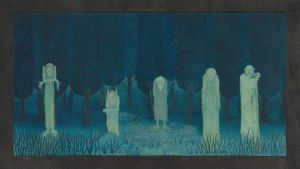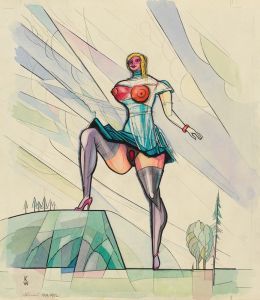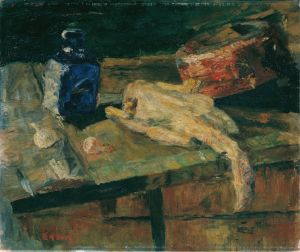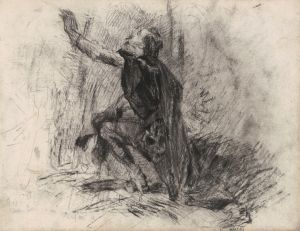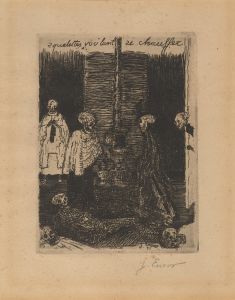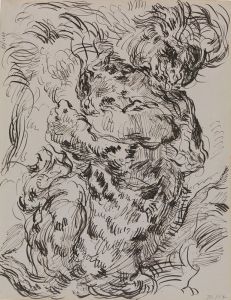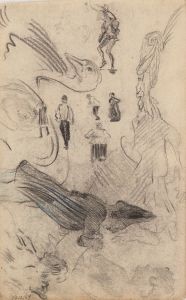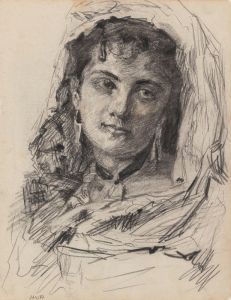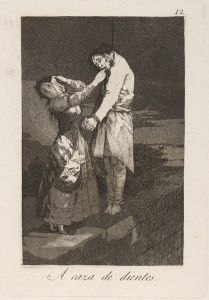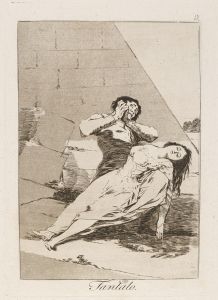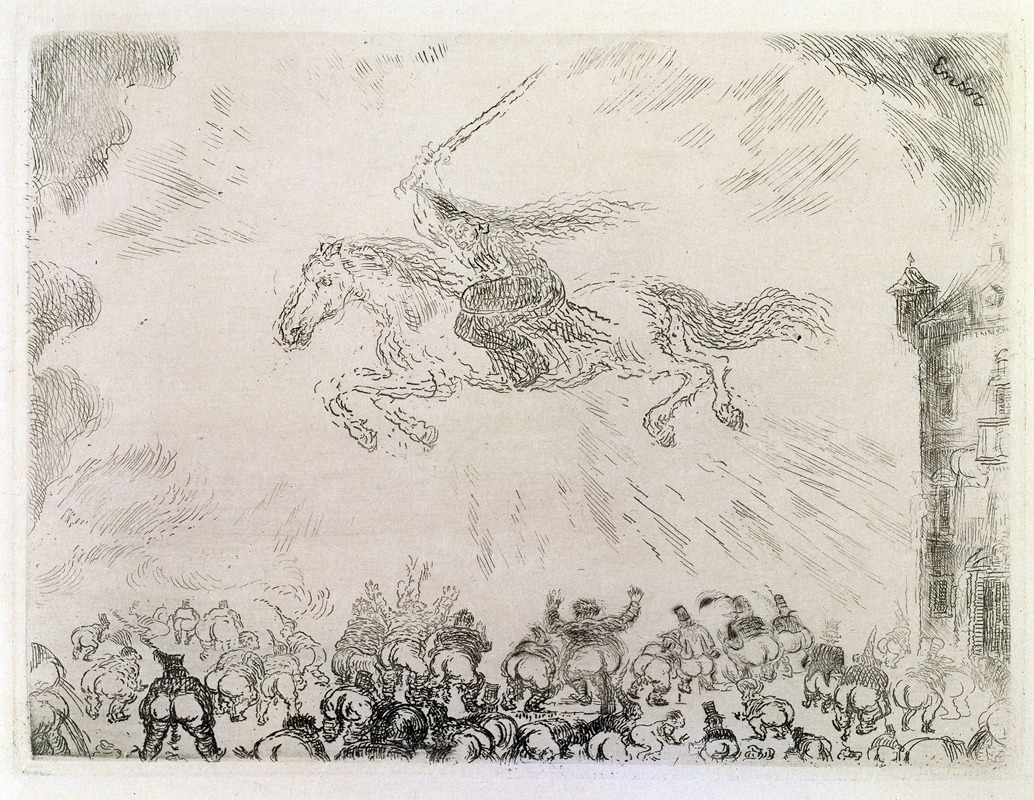
The Destroying Angel
A hand-painted replica of James Ensor’s masterpiece The Destroying Angel, meticulously crafted by professional artists to capture the true essence of the original. Each piece is created with museum-quality canvas and rare mineral pigments, carefully painted by experienced artists with delicate brushstrokes and rich, layered colors to perfectly recreate the texture of the original artwork. Unlike machine-printed reproductions, this hand-painted version brings the painting to life, infused with the artist’s emotions and skill in every stroke. Whether for personal collection or home decoration, it instantly elevates the artistic atmosphere of any space.
James Ensor's "The Destroying Angel" is a notable work by the Belgian artist, who is renowned for his unique style that blends elements of symbolism, expressionism, and surrealism. Ensor, born in 1860 in Ostend, Belgium, was a pivotal figure in the transition from 19th-century realism to 20th-century modernism. His work often features fantastical imagery, grotesque figures, and a vivid use of color, reflecting his fascination with themes of death, masks, and the absurdity of life.
"The Destroying Angel," painted in 1889, is a prime example of Ensor's distinctive approach to art. This painting is characterized by its dramatic composition and the use of bold, contrasting colors. Ensor's work frequently includes religious and allegorical themes, and "The Destroying Angel" is no exception. The painting depicts an angelic figure, which can be interpreted as a symbol of divine retribution or a harbinger of doom, reflecting Ensor's interest in the macabre and the mystical.
Ensor's use of light and shadow in "The Destroying Angel" is particularly striking. The angel is often portrayed with an ethereal glow, contrasting sharply with the darker, more chaotic elements surrounding it. This contrast not only highlights the central figure but also creates a sense of tension and unease, a hallmark of Ensor's work. The painting's composition draws the viewer's eye towards the angel, emphasizing its significance within the scene.
The themes explored in "The Destroying Angel" are consistent with Ensor's broader body of work, which frequently critiques societal norms and explores existential themes. Ensor was known for his satirical take on the human condition, often using religious imagery to question the moral and ethical standards of his time. This painting, like many of his others, can be seen as a commentary on the inevitability of death and the futility of human endeavors in the face of divine or cosmic forces.
Ensor's work was not widely appreciated during his lifetime, as his style was considered too avant-garde for the conservative tastes of the late 19th century. However, he gained recognition later in life and is now celebrated as a pioneer of modern art. "The Destroying Angel" exemplifies the innovative spirit of Ensor's work, showcasing his ability to blend traditional religious iconography with modern artistic techniques to create a powerful and thought-provoking image.
Today, James Ensor is regarded as one of Belgium's most important artists, and his works, including "The Destroying Angel," are held in high esteem by art historians and collectors alike. His influence can be seen in the works of later artists, particularly those associated with the expressionist and surrealist movements. Ensor's legacy is one of challenging artistic conventions and pushing the boundaries of what art can express, making "The Destroying Angel" a significant piece in the history of modern art.





